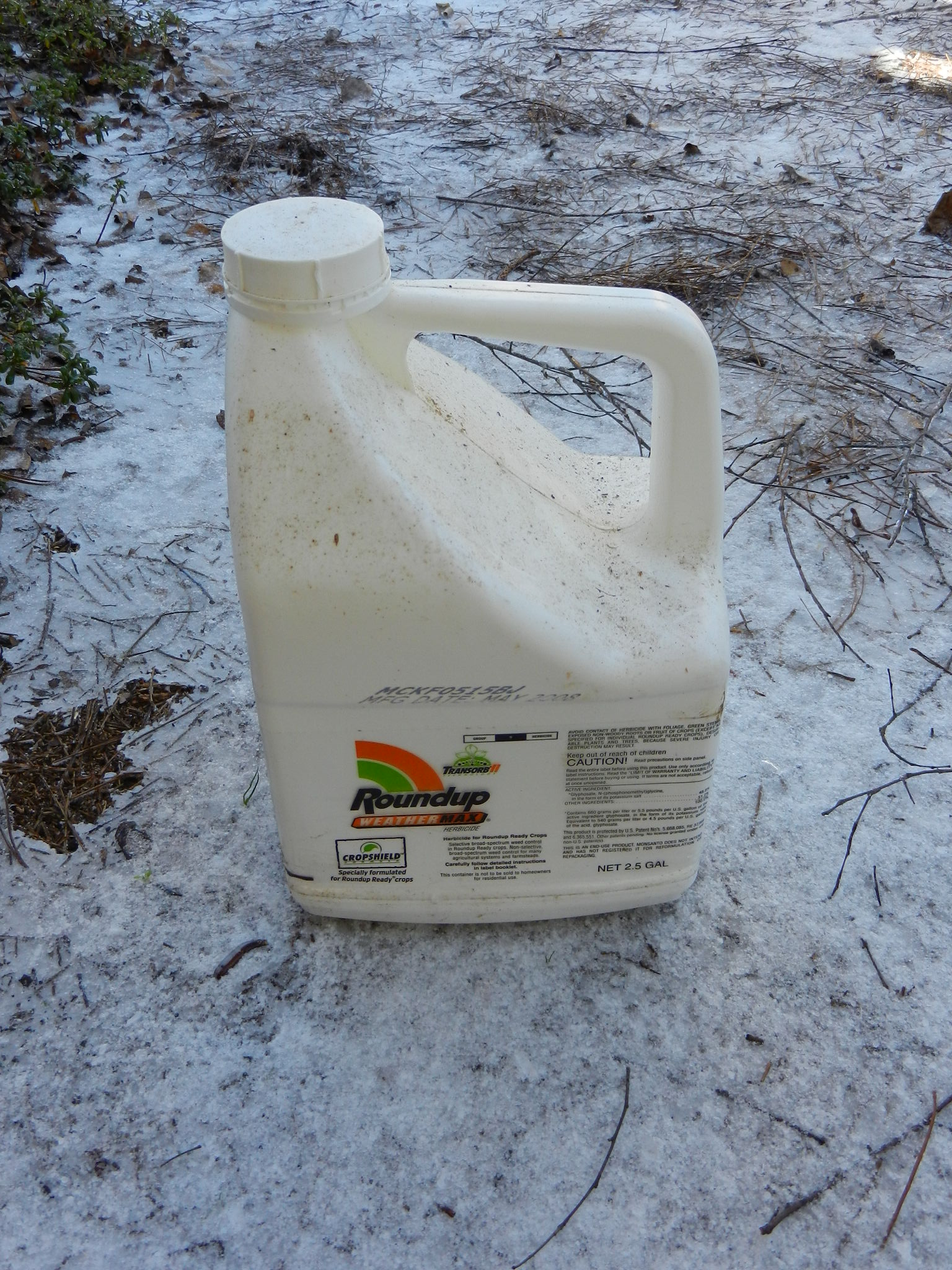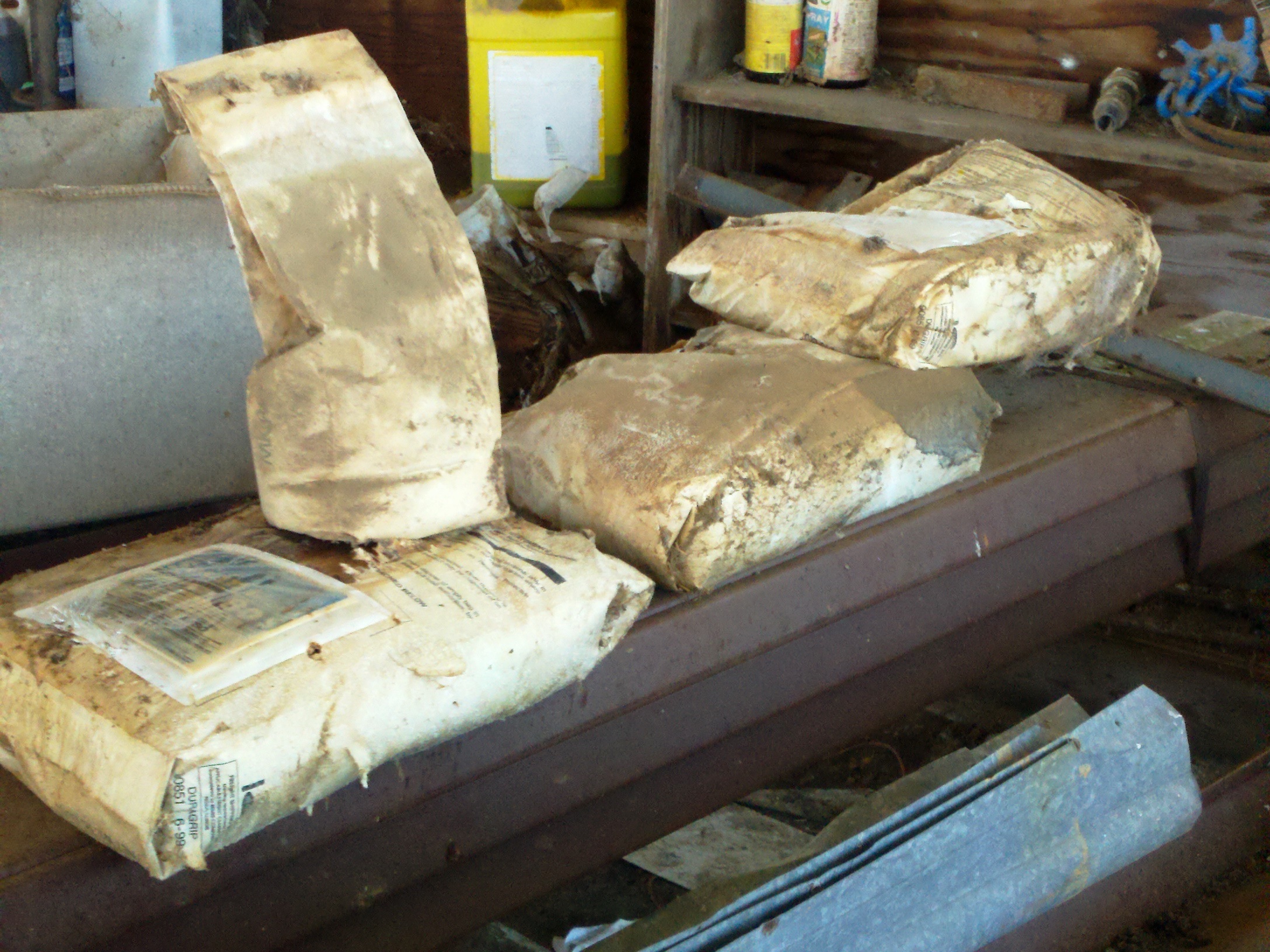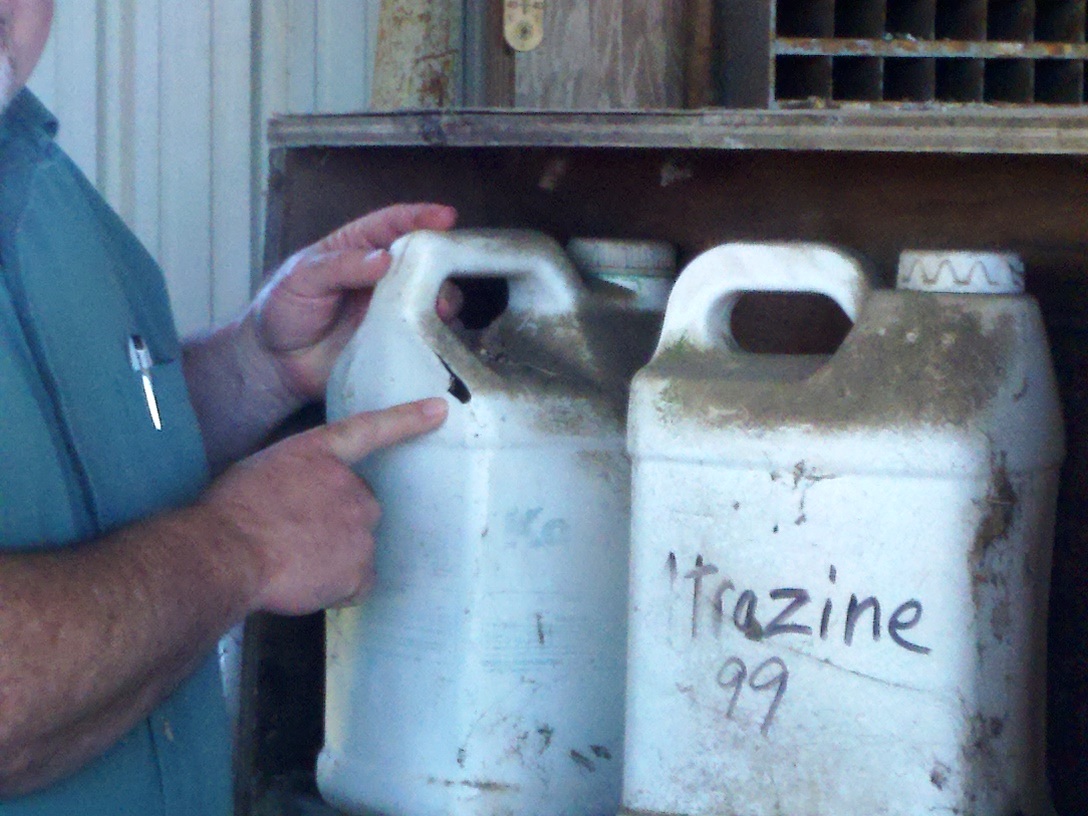
Exposure of pesticides to extreme temperatures (such as this jug of Roundup on ice during North Florida’s recent ice storm) can decrease their effectiveness and usability. Photo by Mike Donahoe
Temperature extremes, like the unusually cold weather we have been experiencing across North Florida this winter, can have an adverse affect on many pesticide products if they are not stored properly. Exposure to extreme temperatures can decrease the effectiveness and usability of many pesticides. Pesticide labels have specific information on storage temperatures in the ‘Storage and Disposal” section on the label. Most pesticide labels call for storage in a “cool, dry” place that is well-ventilated. As a general rule, temperatures inside the storage area should range between 40 and 100 degrees F.
Some pesticides will freeze when they get too cold, causing the container to crack and leak. Freezing temperatures can render some liquid formulations useless by causing the active ingredients to separate from its solvents, emulsifiers, and other inert ingredients. This may cause the product to either crystallize or coagulate. In some cases the product may be thawed and reused after agitation if so specified on the label.
Because of the ingredients in the formulation, the freezing point of many products many be lower than 32° F. Generally, dry pesticide formulations are not adversely affected by temperature extremes. Rather, their effectiveness is most often reduced by the presence of moisture in storage. Each product is different, so always check the label. For example, label statements for the herbicide imazapyr (Arsenal, Chopper, Stalker, etc.) say “Do not store below 10° F”. Labels for pendimethalin (Prowl, Stealth, Pendulum, Pendant, etc.) state “Do not store below 40° F” and “extended storage at temperatures below 40°F can result in the formulation of crystals on the bottom of the container”.
Heat is usually the main concern for storing pesticides in Florida. Some pesticides expand when they get too hot. High temperatures may cause plastic to melt or become brittle. Heat may cause a buildup of pressure that may break glass containers or cause the chemicals to volatilize or spill out when the container is opened. Excess heat may also cause an explosion or fire.

What’s wrong with this picture? This is an extreme example of improperly stored herbicides, but you can see where exposure to moisture and temperature extremes have rendered these products ineffective. Photo by Judy Ludlow
Moisture is also a major concern when storing pesticides. Water or excess moisture can damage pesticide containers and their contents. Moisture causes:
- Metal containers to rust
- Paper and cardboard containers to split or crumble
- Pesticide labeling to peel, smear, or become unreadable
- Dry pesticides to clump, degrade, or dissolve
- Slow-release products to release their active ingredients.
Temperature and moisture are just two of the many important considerations when storing and handling pesticides. Pesticides should be stored safely in a facility that is properly designed for their storage. A well-designed and maintained pesticide storage site should:
- Protect people and animals from exposure.
- Reduce the chance of environmental contamination.
- Prevent damage to pesticides from temperature extremes and excess moisture.
- Safeguard pesticides from theft, vandalism, and unauthorized use.
- Reduce the likelihood of liability.
Proper storage of “restricted use” pesticides is also the law. According to Chapter 5E-2, Florida Administrative Code, “restricted use pesticides shall be stored and maintained in a secure manner, such that they are not easily accessible to unauthorized persons”.

Not only are improperly stored herbicides a dangerous situation, but in the end, are also a costly loss to the producer. Photo by Judy Ludlow
For additional information refer to the following references:
Buhler, W. 2014. Pesticide Environmental Stewardship website. Storage Conditions. http://pesticidestewardship.org/storage/Pages/StorageConditions.aspx
Fishel, F.M. Pesticide Labeling: Storage and Disposal. UF/IFAS EDIS Document PI-106. http://edis.ifas.ufl.edu/pi143
Fishel, F.M.. 2013. Secure Pesticide Storage: General Features. UF/IFAS EDIS Document PI-33. http://edis.ifas.ufl.edu/pi068
Fishel, F.M.. 2013. Storage Limitation Statements: Temperature – Fungicides. UF/IFAS EDIS Document PI-122. http://edis.ifas.ufl.edu/pi159
Fishel, F.M.. 2013. Storage Limitation Statements: Temperature – Herbicides. UF/IFAS EDIS Document PI-123. http://edis.ifas.ufl.edu/pi160
- 2017 UF/IFAS Cotton Variety Trial Results - March 23, 2018
- Burlin and Levi Findley Families Honored as 2017 Santa Rosa County Farm Families of the Year - January 12, 2018
- Snails have Invaded the Western Panhandle - July 14, 2017
